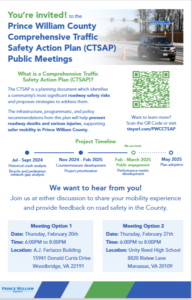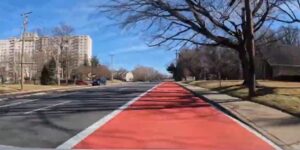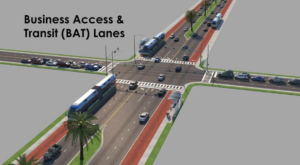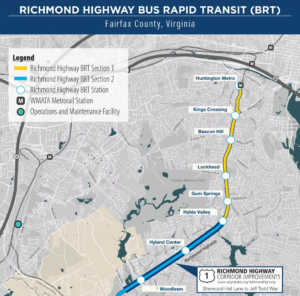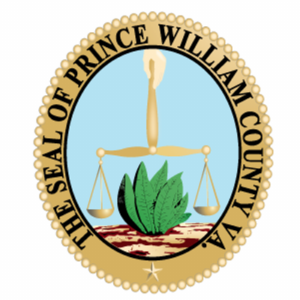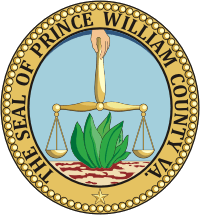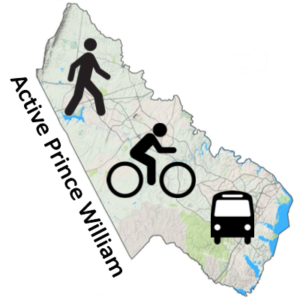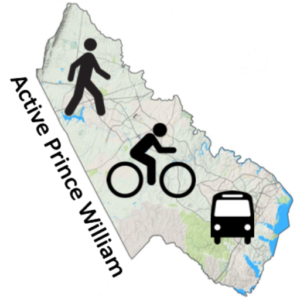
On May 5, 2025, Active Prince William submitted the following recommended programmatic actions for Prince William County’s Comprehensive Traffic Safety Action Plan that is now under development. We look forward to seeing our recommendations incorporated in the adopted plan and implemented by PWCDOT and VDOT in the years to come. View our official comment letter.
Active Prince William’s Recommended Programmatic Actions for Prince William County’s Safe Streets and Roads for All Action Plan
1) Reduce the design speed for all commercial arterial roadways (e.g., Richmond Highway, Sudley Road, Centreville Road, Dale Boulevard) to 35 MPH or less. Speed kills. If VDOT is willing to reduce the posted speed limit on parts of US-1 to 35 MPH in Fairfax County and to 25 MPH in Arlington County (with the local governing body’s concurrence), it will do the same in Prince William County.
2) Avoid and eliminate right-turn-only lanes on commercial arterial roadways, to shorten the crossing distance for pedestrians, lower vehicle speeds and improve yielding behavior at intersections, and reduce traffic crashes.
3) Eliminate overly wide (e.g., all 12-ft) travel lanes and excess roadway capacity through roadway reconfigurations (e.g., lane diets and road diets). Wide and unwarranted travel lanes promote speeding and consume valuable public street space that could be reallocated to better accommodate non-vehicular travel modes and/or turning or parked vehicles.
4) Establish a robust roadway reconfiguration program–in conjunction with scheduled VDOT roadway resurfacing projects–to retrofit bike lanes and pedestrian safety improvements, at little or no cost to Prince William County, through lane diets and road diets. As Fairfax County DOT has accomplished for well over a decade, roadway reconfigurations during scheduled VDOT resurfacing projects can substantially and cost effectively expand a locality’s bikeway network and improve pedestrian comfort and safety.
5) Improve intersection safety for pedestrians, where warranted, by installing pedestrian crossing signals with Leading Pedestrian Intervals, high-visibility (and raised) crosswalks, and improved street lighting. Reduce pedestrian crossing distances with lane reductions, bike lanes, pedestrian refuges, and/or curb extensions (aka bulb outs), and slow turning vehicles by reducing curb- return radii.
6) Add signalized pedestrian crossings of commercial arterials where the existing signalized crossings are too widely spaced.
7) Improve sidewalk safety and comfort for pedestrians and reduce mid-block traffic crashes by consolidating commercial driveway entrances and by installing raised medians during road reconstruction and rehabilitation projects. Meanwhile, all existing driveway aprons on sidewalks should receive high-visibility crosswalk markings until such driveway aprons are eventually removed.
8) Grade separate all trail crossings of multilane roadways, especially as part of interchange construction projects. Install raised crosswalks at at-grade sidewalk and trail crossings to enhance the visibility and reinforce the right-of-way of crosswalk users and to slow approaching traffic.
9) Ensure that all roadway crossings of streams are planned, designed, and effectively inventoried by VDOT to accommodate existing and future stream valley trails beneath the roadway or within the steam culvert.
10) Avoid and eliminate all at-grade sidewalk and trail crossings of multilane turn lanes or highway ramps, to preclude dual-threat or multi-threat crossing situations, where the drivers in every lane must stop for (or yield to) vulnerable road users and already-stopped vehicles may block the view of crossing pedestrians.
11) Install signs, pavement markings, and flashing beacons, as appropriate, to alert turning drivers to crossing vulnerable road users at free-flow right-turn lanes (aka slip lanes).
12) Ensure that all segments of US Bicycle Route 1 within Prince William County attain an acceptable Bicycle Level of Service (BLOS) of C or better, through roadway reconfigurations, route realignments, paved shoulder retrofits, and/or shared-use path construction or reconstruction, following up on this circa 2013 route evaluation. The deficient route segments currently include Fleetwood Dr, Aden Rd, Joplin Rd, Bristow Rd, Hoadly Rd, Minnieville Rd, Old Bridge Rd, and Tanyard Hill Rd.
13) Establish Prince William County procedures for snow and ice removal from sidewalks and shared-use paths, especially along bus routes. VDOT, by established policy, does not remove snow or ice from its sidewalks or shared-use paths, but after the roads have been cleared, sidewalks, paths, and bus stops may be blocked for many days and even weeks by mounds of plowed snow and ice, forcing pedestrians and bus riders to walk in the roadway. Do Prince William County and its four towns have and enforce snow-removal ordinances? Could volunteers be enlisted to adopt a road segment for snow clearing? Are both the County and PWCS equipped and mandated to remove snow and ice on sidewalks and paths that front PWC- or PWCS-owned parcels?
14) Establish and enforce Prince William County procedures to ensure the maintenance of traffic (MOT) for people using sidewalks or shared-use paths during nearby construction projects.
15) Establish programs to identify, inspect, prioritize, and annually fund the construction, repair, replacement, and upgrade of sidewalks and shared-use paths, by the County and by VDOT.
16) Establish a program to identify, prioritize, fund, build, and maintain neighborhood cut-through paths that connect low-traffic subdivision streets.
17) Develop and promote a bicycle comfort level (level of traffic stress) map for Prince William County, building upon a previous effort.
18) Establish a PWC quick-build program to test road reconfiguration concepts in a cost-effective and timely manner.
19) Implement a strategic and data-driven program of automated traffic law enforcement to the fullest extent allowed by the Commonwealth of Virginia.
20) Continuously track and report annually on traffic crashes, injuries, and fatalities to identify their leading causes and locations and to monitor progress.
21) Develop a strategic and comprehensive active transportation master plan for Prince William County, guided by an expert team of outside consultants.
###
